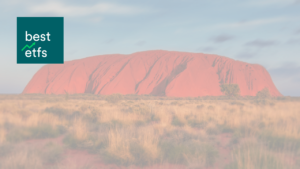The ASX 200 Index (XJO) is expected to drop when the market opens on Wednesday as global markets weakened overnight. Here’s your ASX morning report.
What you missed on Tuesday
The ASX 200 ultimately capitulated on Tuesday, finishing down 0.4% despite trading as much as 1.1% higher during the session. Every sector but materials (+0.9%) finished lower as invested wait with bated breath for the global reporting season to get rolling. The second Victorian lockdown is clearly having an impact on markets, with JP Morgan cutting their third-quarter GDP forecast from 3.7% to 2.5%.
It’s fair to say that the standout for the second half of 2020 has been the commodities sector, with the likes of Fortescue Metals (ASX: FMG), up 3.2% yesterday, and Northern Star Mining (ASX: NST), down 1.1%, both hitting all-time highs due to a confluence of near-perfect conditions. This includes a weaker AUD, China’s relative resilience and commodity supply chains being heavily hit by COVID-19.
The story has been the opposite offshore, with the more evolved US markets being driven by the new economy rather than the old. Amazon (NASDAQ: AMZN) and Apple (NASDAQ: AAPL) report on Friday.
Featured video: Australian property investing 101
Global markets
US markets weakened overnight, with the S&P 500 and Nasdaq falling 1.3% respectively as earnings season begins to ramp up. McDonald’s (NYSE: MCD) and Louis-Vuitton-Moet-Hennessy (FR: MC) were two the biggest barometers for the global economy, with both reporting weaker than expected results.
The result from McDonald’s was the worst sales decline in recent memory, with same-store sales falling 23.9% whilst US performance remained strong due to its drive-thru and delivery options. MCD shares fell 2.5% overnight.
LVMH suffered a similar fate, falling 4.1% as quarterly profit fell 28% to €$1.67 billion. Despite cutting costs by close to 29% during the year, this simply wasn’t fast enough to offset the swift decline in sales. Both MCD and LVMH are simply struggling in the face of extensive physical networks that can’t easily be closed.
Back home on the ASX, fractional investor RAIZ Invest (ASX: RZI) delivered a quarterly update, reporting funds under management increased 30.6% to $453.6 million, bucking the likes of Platinum Asset Management (ASX: PTM) who are seeing heavy outflows.
How we’re using gold in an ASX portfolio
One of the more stunning trends in recent weeks has been the incredible rally in the price of gold. Despite its strong returns over multiple years, it remains misunderstood by market experts, advisers and investors alike. Most media continue to be fixated on gold bullion’s role as a hedge against inflation, suggesting inflation expectations are increasing on the back of loose monetary policy and forcing investors to add an exposure.
Clearly this has not been the case, as central banks who specifically target inflation have been unable to stimulate it at all despite unconventional monetary policy being in place since the GFC. So, if it’s not inflation, then what is it?
Having included gold bullion in our portfolio for many years, it’s more straightforward; gold to us represents one of the few assets that doesn’t really have a valuation cap. It is a rare and precious metal with industrial uses, but also one with thousands of years of history as a store of wealth and at times, as currency.
The reason investors are flocking to it now is quite simple: cash no longer offers any return and the outlook for both bond and equity markets has rarely been quite this uncertain, at least since WWII. In my experience, the biggest risk for gold is a stable, growing global economy, something we shouldn’t expect anytime soon.
To learn more about how to get exposure to gold on the ASX, check out this article from Max Wagner: GOLD versus Gold Miners ETF (GDX)
This article was written by Drew Meredith, Financial Adviser and Director of Wattle Partners. To get in contact with Drew, click here to visit the Wattle Partners website.
[ls_content_block id=”695″ para=”paragraphs”]




